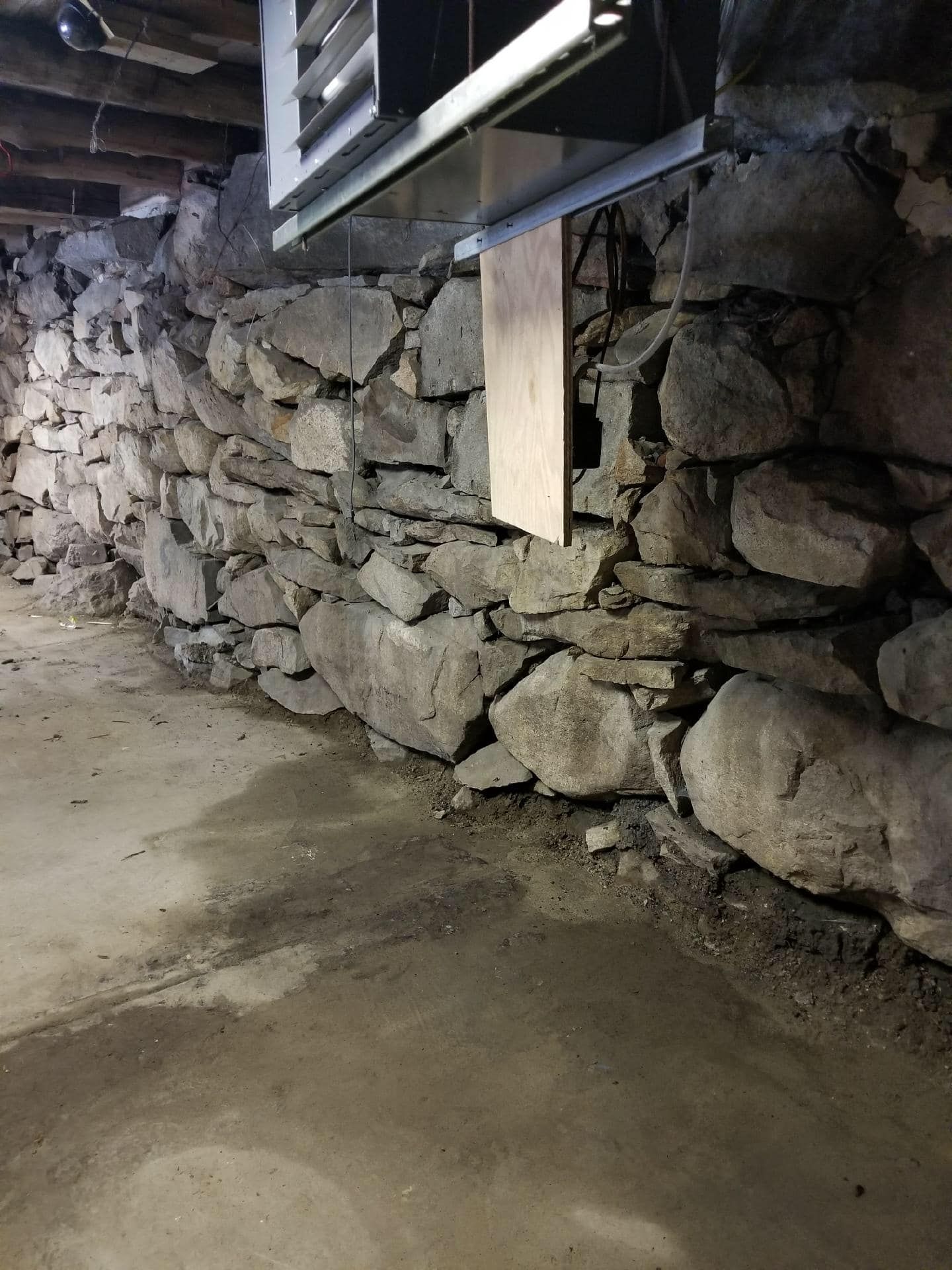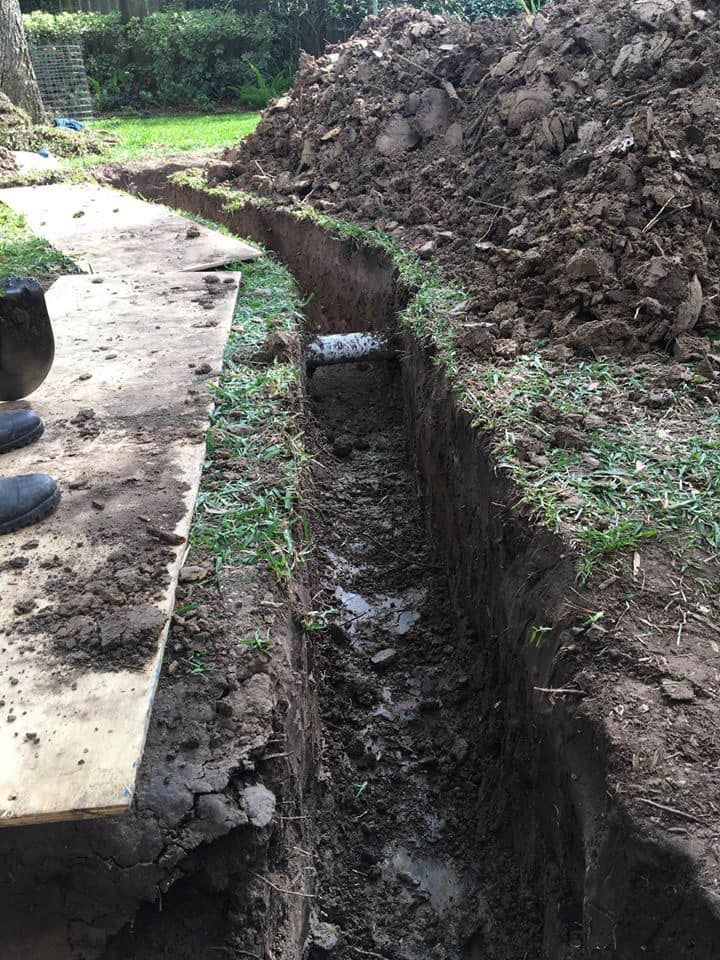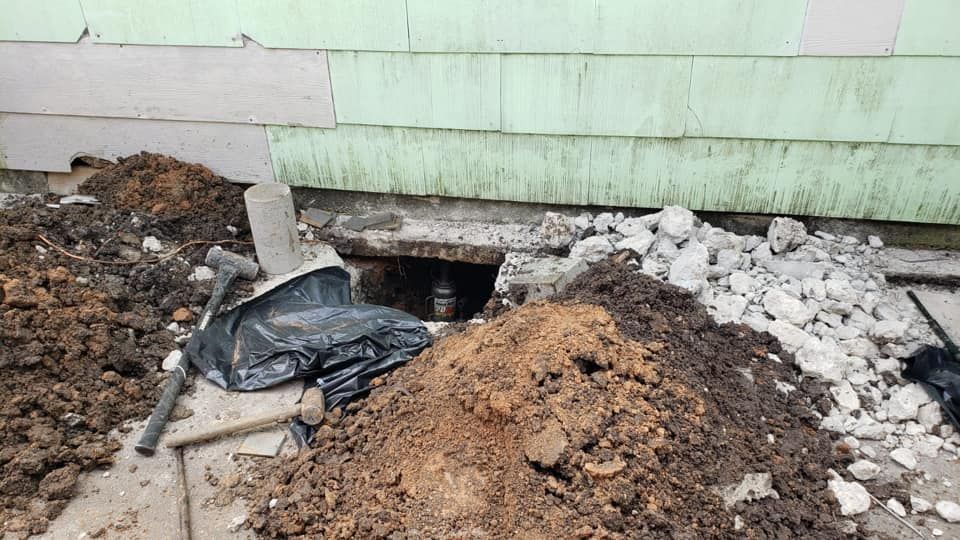Foundation repair is restoring the structural integrity of a building's foundation, which can include cracks, settling, or shifting. The foundation of your home is what supports the entire structure, and any damage can lead to serious problems that can be costly to fix. Repair is typically done by stabilizing the foundation, levelling the structure, and correcting any damage caused by the foundation problem. Foundation repairs can range from minor adjustments to permanent structural repairs.
Foundation Repair in 2023 - Symptoms, Causes, and Repair Options
What is Foundation Repair?

Types of foundations
Your home's foundation is one of the most critical aspects of its structure. It serves as your home's base, supporting your entire house. Issues with your foundation can cause further damage your home's structure. Understanding the type of foundation your home has is crucial in ensuring its longevity and safety.
Concrete Slab
Concrete foundations re the most common type of foundation. They are prevalent in warm climates. This is because they are poured directly onto the ground, providing good insulation throughout your home. However, if the ground beneath the slab shifts, it can cause cracks and damage to the concrete foundation itself.
Crawlspace
Another popular type of foundation is a crawlspace foundation. Crawlspace foundations are typically built in areas with high moisture and flood risk. They elevate the home a few feet off the ground, providing a small space underneath the house that can be used for future maintenance and repairs. The downside of a crawlspace is that it can lead to pest infestations and moisture issues if not properly sealed and maintained.
Full Basement
A full basement foundation is built below ground level. This type of foundation is typically found in colder climates as they often need deeper foundation footings. Full basements provide many benefits. This includes extra living space, storage, and protection against extreme weather events. The downside to full basements is they are more expensive and prone to moisture if not w
Full Basement
A full basement foundation is built below ground level. This type of foundation is typically found in colder climates as they often need deeper foundation footings. Full basements provide many benefits. This includes extra living space, storage, and protection against extreme weather events. The downside to full basements is they are more expensive and prone to moisture if not waterproofed correctly.
Cinder Block and Brick
Two common types of masonry foundations are Cinder block and brick foundations. Made up of concrete blocks or bricks and mortar, they provide a strong and durable foundation for the home. Yet, these foundations are more susceptible to water damage and cracking.
Pier and Beam
Pier and beam foundations supports your home several feet aboveground, creating an open-air crawlspace. This type of foundation comprises either concrete piers, or beams composed of metal, concrete, wood, or brick. This type of foundation is common in areas with unstable soil or flood risk, as it allows for more flexibility. Unfortunately, pier and beam foundations often require maintenance and are relatively pricey.
Signs and symptoms of foundation problems
When it comes to foundation problems, prevention is key. But sometimes, despite best efforts, issues can still arise. Homeowners must be aware of the signs and symptoms of possible foundation problems. Signs of bowing walls, misaligned doors, or drainage problems are important to spot before significant problems arise.
Sagging or Uneven floors
One of the most common signs of foundation problems is sagging or uneven floors. If your floors are sloping or uneven, it could indicate the foundation is settling or shifting. If left untreated, it can lead to more serious problems, such as cracks in your walls and ceilings. This could be caused by various factors, such as changes in the soil around the foundation, poor drainage, or even plumbing leaks.
Cracks in walls and foundations
Another common symptom of foundation problems are foundation cracks in your walls and foundations. If you see cracks in your walls or foundation, it's important to assess the status of your home. Small cracks can quickly turn into larger ones, compromising the structural integrity of your home.
Problems with plumbing and drains
When a foundation shifts or settles, it can cause plumbing pipes to bend or break, leading to leaks and other problems. If you're experiencing frequent clogs or slow drainage, this is another sign of a foundation problem.
Soggy soil around the house
Soggy or saturated soil around the perimeter of your home could be a sign of poor drainage or foundation problems. When water is not properly diverted away from the foundation, it can seep into the soil and cause it to become saturated.
Bulging foundation
A bulging foundation is a serious sign of damage and could indicate that the foundation is on the verge of collapsing. If you notice any bulging, contact a reputable contractor today
Sagging ceilings
In older homes, Sagging ceilings are a common symptom of foundation problems. Sagging ceilings can cause the walls to misalign, stress the ceiling more, and lead to aesthetic issues.
House Temperature Issues
If you have difficulty maintaining a consistent temperature in your home, this may be due to a damaged foundation. Uneven settling of the foundation can cause your house to shift and become unlevel. This results in leaks and gaps that allow outside air to enter the house. Thus, making it harder to maintain a consistent temperature. In addition, foundation problems can reduce the effectiveness of your insulation. Foundation issues can cause your insulation to shift, become compressed, or even fall out of place.
Your foundation can also cause temperature control issues by affecting the HVAC system. A shifted foundation can cause damage to the ductwork or the HVAC unit itself. This will lead to leaks, inefficiencies, or even complete failure.

What causes foundation problems?
By having a basic knowledge of what causes foundation problems, homeowners can take precautions to protect their homes. Understanding the root causes of foundation damage can also help address issues before they become more severe. Regularly inspecting their homes for signs of foundation damage will save money, time, and headache.
Clay Soil Erosion
Homes built on clay soil are especially vulnerable to soil erosion leading to foundation problems. Clay soil expands and contracts with changes in moisture, stressing the foundation. During drought, the soil can shrink and pull away from foundations, creating gaps between them.
Moisture
Moisture is another significant contributor to foundation problems. When water seeps into the soil around the foundation, it can cause it to shift or settle. Common causes of excess water are
- improper ground preparations
- poor soil conditions
- poor drainage
- plumbing leaks
- extreme weather
Exterior and interior structural damage
Damage to a home's exterior or interior structure can also lead to foundation problems. For example, a damaged roof can allow water to seep into the basement walls, leading to moisture buildup and soil erosion. Plumbing leaks or burst pipes can also cause water damage by adding excess moisture. In some cases, natural disasters such as earthquakes can also cause significant damage to a home's foundation.
Trees and shrubs
Trees and shrubs can be a beautiful addition to any yard but can cause foundation problems if planted too close to home. The roots of trees and shrubs can extend far underground. They can exert significant pressure on the foundation as they grow, causing it to shift or crack. Other times, the roots can absorb large amounts of water. This can increase the soil's moisture levels around the foundation. Homeowners should be mindful of the placement of trees and shrubs near their homes. This will ensure their shrubs are at a safe distance to prevent damage to the foundation.
Foundation Repair Options
When it comes to foundation repair, various options are available, depending on the type and severity of the damage. Here are some common methods used by foundation repair professionals:
Foundation Replacement
If the damage to a foundation is too extensive, the only option may be to replace the entire foundation. This is a complex and costly process, but it may be necessary to ensure the stability of your home. If you suspect that your foundation is damaged beyond repair, consult with a foundation specialist to determine if foundation replacement is the best option.
Soil Treatment
Soil treatment is the process of assessing and correcting the condition of the soil beneath a home's foundation. It involves injecting chemicals or materials into the soil around the foundation. This upgraded soil will improve its stability and prevent further foundation settlement. Soil treatmant is commonly used for foundations built on expansive soils that are prone to cause damage over time.
Home Drainage System
Proper drainage is critical to prevent water damage and soil erosion. Installing a home drainage system can redirect water away from the foundation. This method is used in conjunction with other foundation repair methods.
Foundation Slab Jacking
Slab jacking is a cheap way to repair foundations. It could also save thousands by replacing the foundation entirely. Slab jacking starts with drilling small holes in the existing slab. After drilling, a concrete slurry or dense polyurethane foam is injected. This helps raise and level the foundation. If the soil beneath the foundation cracks is compacted, Slab jacking can provide a permanent solution
Cement Grout
Cement grout is a mixture of cement, water, and sand injected into the soil under a foundation to fill voids and improve stability. This method is commonly used for smaller foundation repair projects.
Push Piers
Push piers are steel tubes driven deep into the ground until they reach stable soil. They are then used to lift and stabilize the foundation. This method is commonly used for homes built on clay soils prone to settlement.
Foam Sealants
Foam sealants are used to fill gaps and cracks in the foundation. They are typically made of polyurethane and can expand to fill even the smallest openings. High-density polyurethane foam is often preferred for emergency foundation repairs. This is because it can be quickly applied and provides stabilization. This method is commonly used for minor foundation repair projects.
Local Foundation Repair Company
If you are looking for a foundation repair company in the Northern Colorado area, JRC Fort Collins Concrete provides foundation repair services to all of the northern colorado area!


